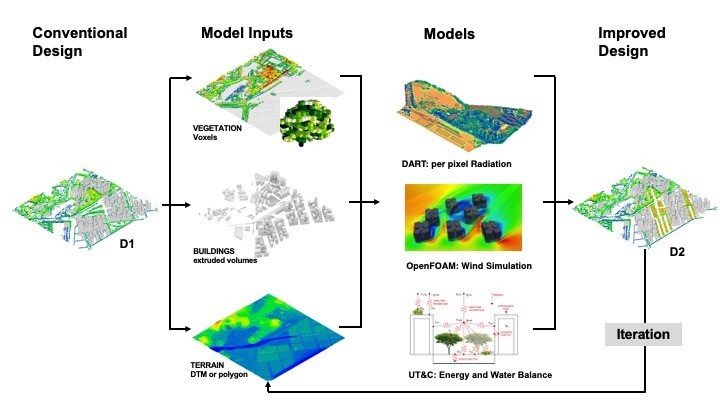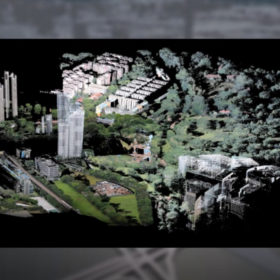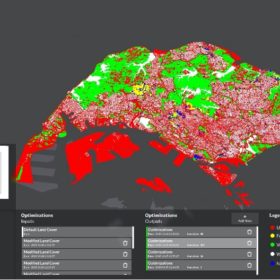
Until recently, urban planners and designers gave little consideration to the multifunctional design of green spaces. This was partly because quantitative information about the extent of ecosystem benefits was not readily accessible to landscape professionals. Future Cities Laboratory (FCL), Singapore-ETH Centre has developed an ‘Ecosystem Services-Design Loop’ that creates an effective link between ecosystem performance and the landscape design.
Ecosystem services are the benefits we obtain from nature. In an urbanized environment, fragments of nature help improve the quality of life in anthropogenic landscapes. Green spaces have long been valued for the aesthetic and recreational benefits they bring to urban areas. Increasingly, they are also being recognized as a source of other benefits, such as mitigating urban floods, moderating high temperatures and reducing air and water pollution.
Assessment of Ecosystem Services
The FCL project ‘Ecosystem Service in Urban Landscapes’ developed the concept of an ‘Ecosystem Services-Design Loop’. This concept envisions a tool enabling designers and planners to predict the ecosystem services provided by a potential development. Simulation tools (UT&C, DART, and OpenFoam) are used to answer the question about the multiplicity of ecosystem services benefits of a new design in a particular landscape context. Predictive modelling tools assess the landscape design made in Point-Cloud, and simulate benefits, based on the detailed vegetation form, types of plants and their properties (e.g. tree height, LAI). The design is then improved in an iterative process (Figure 1) that is guided by the results of the simulations as well as by knowledge about the local ecology (cooling effect of different vegetation; urban biodiversity etc.) and human-environment interactions (park usage and visit frequency of urban parks; perception of urban vegetation types; perception of urban birds; engagement with nature-related activities etc.). Relevant knowledge for Singapore has been summarized in the Ecosystem Services in Urban Landscapes Guidebook. Using these tools and information, planners and architects can quantify the impact of their designs upon environmental performance, including such aspects as rainwater retention, air temperatures, and windspeeds. This simulation of the environmental impacts of different designs offers a powerful way to convince developers of the value of urban greening.
Dr. Zuzana Drillet was a coordinator of the Ecosystem Services in Urban Landscapes Project at the Singapore-ETH Centre (SEC).
Prof. em. Peter Edwards was a Principal Investigator of the Ecosystem Services in Urban Landscapes Project at the Singapore-ETH Centre (SEC).

